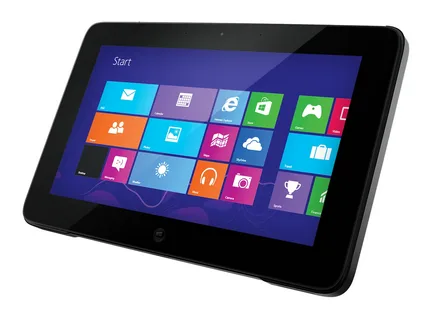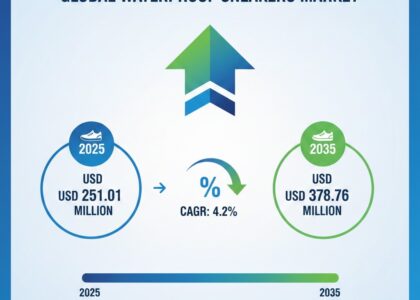The tablet market will reach USD 50 billion in 2025 and stretch to USD 140 billion in 2035, reflecting a CAGR of 14.5% over the period of the forecast. Factories are increasingly adopting AI-driven tablet technologies, cloud-based computing systems, and real-time processing information with the aim of initiating productivity to its full potential and creating an even finer digital experience. Spending on foldable screens, powerful chipsets, and 5G connectivity will fuel growth.
In a digital world defined by mobility, versatility, and seamless connectivity, the line between consumption and creation is becoming increasingly blurred. Sitting at the intersection of smartphones and laptops is a device that has evolved far beyond its original purpose—the tablet.
Once considered a media consumption gadget, the tablet has grown into a productivity powerhouse, creative canvas, and educational companion. Whether in boardrooms, classrooms, studios, or living rooms, tablets are quietly redefining how people interact with technology—on their terms, wherever they are.
Get Ahead with Our Report: Request Your Sample Now!
https://www.futuremarketinsights.com/reports/sample/rep-gb-1987
More Than a Screen: Enabling Flexible Computing for Every User
At first glance, a tablet is a touchscreen device. But beneath the glass lies a fusion of computing power, intuitive design, and connectivity that empowers users to read, write, draw, collaborate, and stream—all on a single, portable platform. With high-performance processors, stylus support, detachable keyboards, and app ecosystems that rival traditional PCs, tablets now serve as all-in-one productivity tools.
From editing spreadsheets on the go to sketching digital art or joining a video call, tablets are designed for fluid transitions between work, creativity, and entertainment—fitting modern lifestyles that refuse to be boxed into one mode of use.
Overshadowed by Smartphones and Laptops, Yet Uniquely Positioned
While smartphones boast portability and laptops promise performance, tablets offer the best of both worlds. They’re light enough to carry everywhere, yet powerful enough to handle demanding tasks. And in an age where hybrid work, remote learning, and digital-first collaboration are the norm, tablets fill a gap no other device can quite match.
Whether as secondary screens for multitaskers or primary devices for students and professionals, tablets are becoming an essential part of the tech toolkit—not just a luxury accessory, but a necessity in a multi-device ecosystem.
Engineered for Adaptability, Designed for Intuition
Tablet manufacturers are embracing innovation to cater to a wide range of use cases. Sleek designs with ultra-thin bezels and vibrant displays enhance media and design work. Advanced chipsets and cooling solutions push the limits of mobile performance. Meanwhile, accessories like styluses and trackpads bring precision and tactile control to digital workflows.
Operating systems, too, are evolving—bridging the gap between mobile apps and desktop-class experiences. Split-screen multitasking, gesture navigation, and cloud syncing are now standard, giving users the power of a desktop with the simplicity of a touch-based interface.
The Challenge of Differentiation in a Crowded Market
As tablets compete with laptops, convertibles, and large-screen smartphones, brands face increasing pressure to define their value proposition. Screen size, battery life, performance, and ecosystem integration are no longer enough—users demand unique features, seamless app compatibility, and ecosystem cohesion.
At the same time, affordability, durability, and software support are driving decisions—especially in education, where tablets are replacing textbooks and chalkboards with cloud platforms and interactive learning tools. Balancing innovation with accessibility is key to staying relevant in a saturated and fast-moving market.
Exhaustive Market Report: A Complete Study
https://www.futuremarketinsights.com/reports/tablet-market
Driving Sustainability Through Digital Transformation
Tablets are also playing a quiet role in the shift toward digital sustainability. By reducing reliance on paper, enabling remote operations, and consolidating multiple devices into one, they support greener work and learning environments. Longer device lifespans, repairable components, and energy-efficient displays are becoming priorities for manufacturers and users alike.
In enterprise and healthcare, tablets are replacing clipboards and legacy systems—streamlining operations while cutting down on physical materials and waste. Their role in sustainability goes beyond materials—it’s about enabling smarter, lighter, and more efficient workflows.
Compact, Connected, and Continuing to Evolve
They may not always be the star of the tech world, but tablets are consistently proving their worth as versatile, dependable, and forward-looking devices. Whether used for design, learning, communication, or leisure, they empower users to work and play their way—unbound by desks or cords.
As digital lifestyles evolve and device ecosystems grow more integrated, the tablet’s role will only become more central. Quietly adaptable and endlessly useful, tablets are not just surviving in a competitive market—they’re defining what comes next in computing: personal, powerful, and always within reach.






